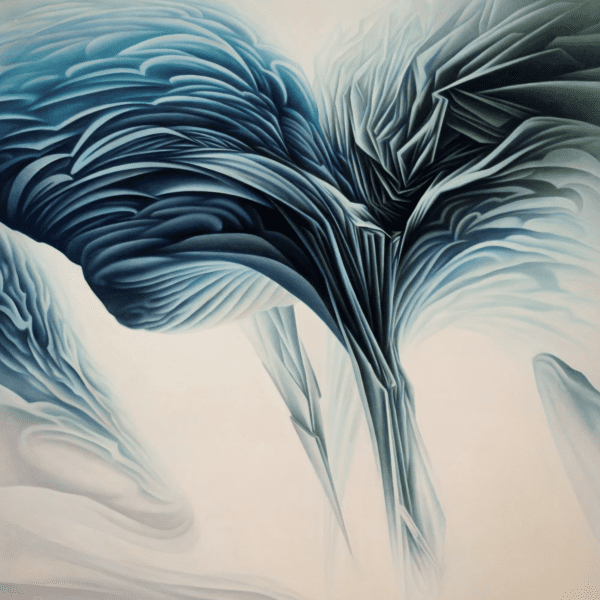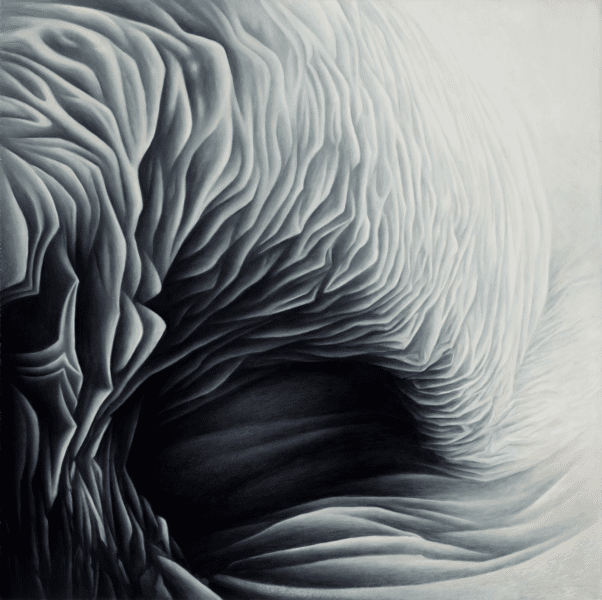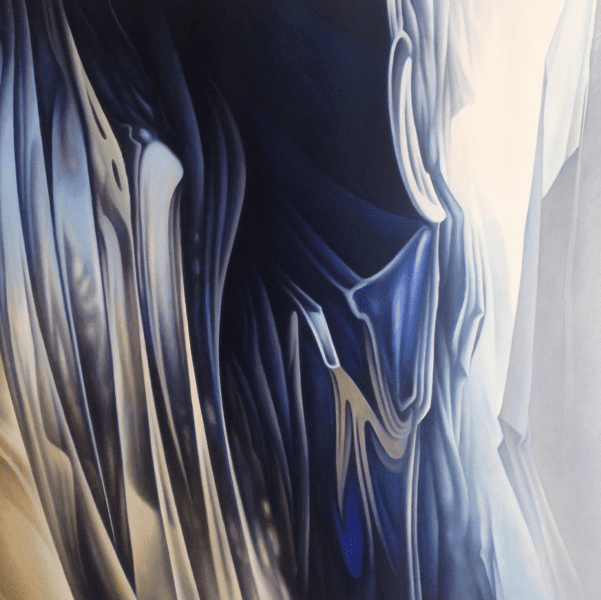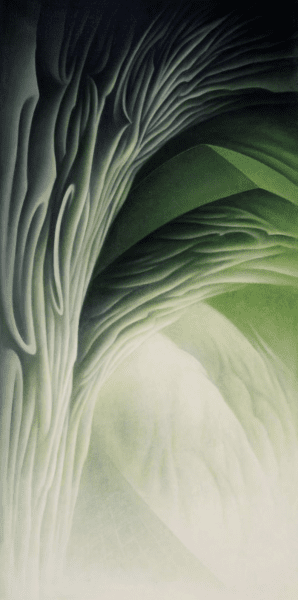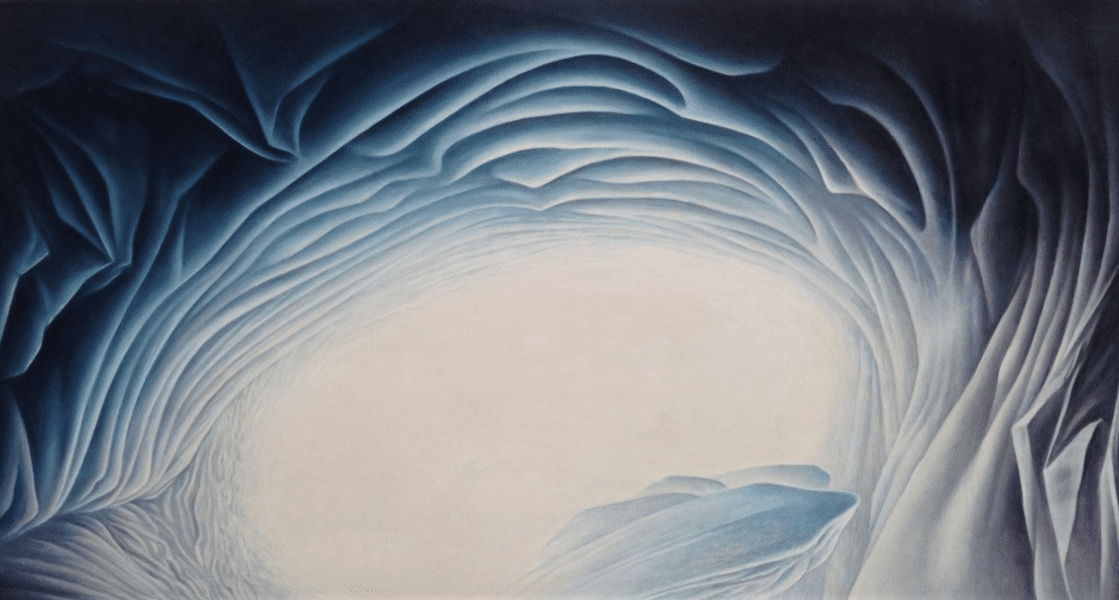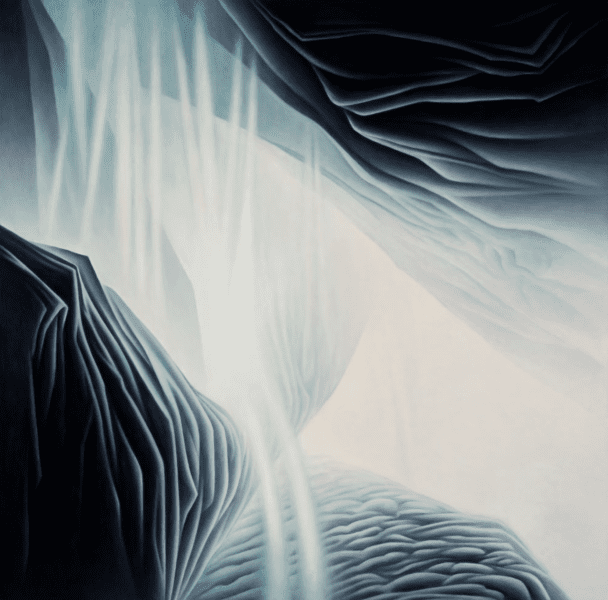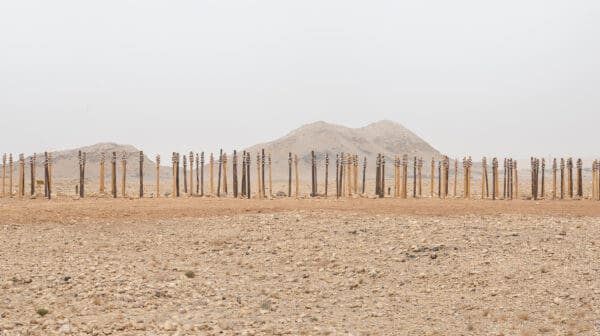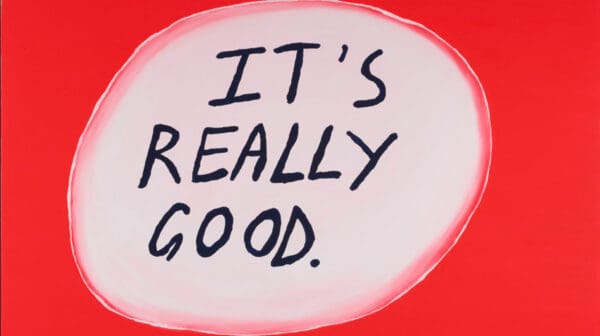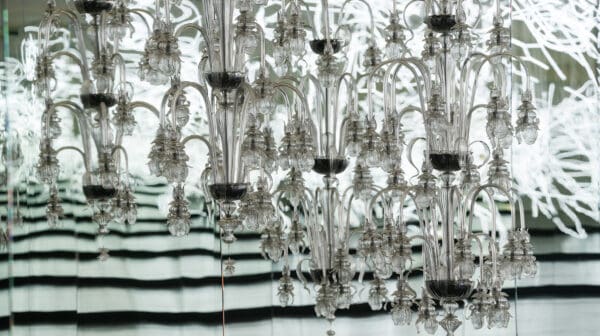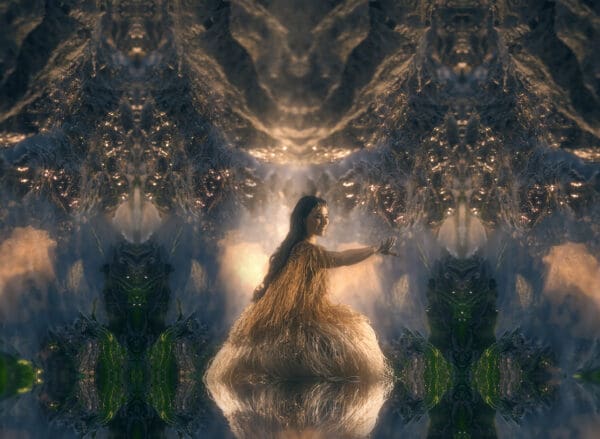Light and space are key concerns in Roger Byrt’s paintings which emit radiance and engross the viewer through upheavals of perspective. These works could be described as landscapes yet they are terrains seemingly removed from the world, full of jarring lines and smooth folds.
Byrt has spent days exploring caves and cavernous spaces around the world and these natural voids form his main subject matter. A previous body of work took him to canyons in America’s south-west where he admired how the light created washed-out and smooth surfaces.
His current series is informed by time in the Jokulsarlon caves, part of the Vatnajökull glacier in Iceland. ‘What really excited me about the prospect of painting these is the light that travels through snow and ice, and then into the cave,” says Byrt. “When light enters a cave it bounces around the space creating a directionless glow.”
This environment is a departure from how light is usually experienced above ground – where one dominant light source, the sun, reigns – creating an other-worldly ambience. The resulting paintings are icy-cool in tone with swirling lines and forms which are mystical, a bit science fiction-like, and bring to mind the internal crevices of the body.
Byrt is also drawn to painting caves because they abandon conventional realist perspective. The structure of the cave allows floating immersion that draws the viewer’s eye to all areas of the canvas. “I like the idea of painting a subject that doesn’t have a horizon line, or any up or down,” says Byrt. “I rotate the works while I’m painting them so there’s this sense of being surrounded by the landscape rather than looking through a window at it.” This approach also brings the viewer closer to his work. Furthermore, Byrt originally trained as a sculptor and there’s a three-dimensionality to the space in his paintings.
Although they exude a contemporary interest in space and abstract form, Byrt is influenced by radiance in paintings by artists such as Rembrandt and Titian. “The aspect of Northern Renaissance painters that interests me, is the techniques they used to achieve luminosity in their paintings,” says Byrt. “They used many thin layers of paint. And to really get the whites activated they used a type of flake white which mellows and becomes even more beautiful with age.” Byrt seeks to build light into his paintings by using a similar watercolour technique which involves slowly building thin layers on the canvas which he undercoats with white. “Light almost bounces off the white underpainting and back to you creating a jewel-like quality,” he says.
Byrt has already started research for his next series. “I’ve been walking through some of the water filled canyons west of the blue mountains in NSW,” he says. “I’m hoping to get another three-years of work out of this. What I’m imagining for that show is water filled cave-like spaces. There will be a more floating or reflective ambiguous space in these works. I’m just imagining that’s what’s going to happen; I don’t know for sure, but I’m just hoping it will happen.”
During Covid-19 restrictions in Melbourne Melt by Roger Byrt can be viewed online.





